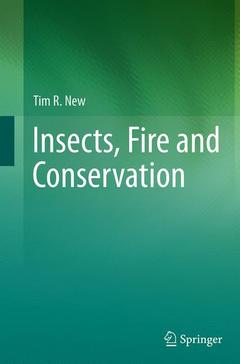Description
Insects, Fire and Conservation, Softcover reprint of the original 1st ed. 2014
Author: New Tim R.
Language: English
Subjects for Insects, Fire and Conservation:
Insects, Fire and Conservation
Publication date: 09-2016
Support: Print on demand
Publication date: 09-2016
Support: Print on demand
Insects, Fire and Conservation
Publication date: 09-2014
208 p. · 15.5x23.5 cm · Hardback
Publication date: 09-2014
208 p. · 15.5x23.5 cm · Hardback
Description
/li>Contents
/li>Biography
/li>Comment
/li>
A global synthesis of the impacts of wildfires and controlled burning on insects, bringing together much hitherto scattered information to provide a guide to improved conservation management practice. The great variety of responses by insect species and assemblages demonstrates the often subtle balance between fire being a severe threat and a vital management component. Examples from many parts of the world and from diverse biotopes and production systems display the increasingly detailed appreciation of fire impacts on insects in terrestrial and freshwater environments and the ways in which prescribed burning may be tailored to reduce harmful ecological impacts and incorporated into protocols for threatened species and wider insect conservation benefits.
1: Fire ecology and insect ecology.- 2: Insect responses to fire.- 3: Sampling and study techniques.- 4: Ecological impacts of fires on insects.- 5: Fires and insect pest management.- 6: Fire in threatened species conservation management.- 7: Fire and insect assemblages.- 8: Fire as a management component.- 9: Prospects.
Emeritus Professor Tim New is an entomologist with broad interests in insect systematics, ecology and conservation. For long based at La Trobe University, Melbourne, he has travelled widely to collect and study insects in many parts of the world, and his extensive publications on these topics include about 40 books. He is recognised globally as one of the leading advocates for insect conservation.
First global synthesis of impacts of fire on insects species and assemblages Demonstrates ways in which prescribed fire can be used in insect conservation management Helps promote more rational and effective balance between fire as threat and management tool and suggests themes for improved protocols in the future Includes supplementary material: sn.pub/extras
© 2024 LAVOISIER S.A.S.




